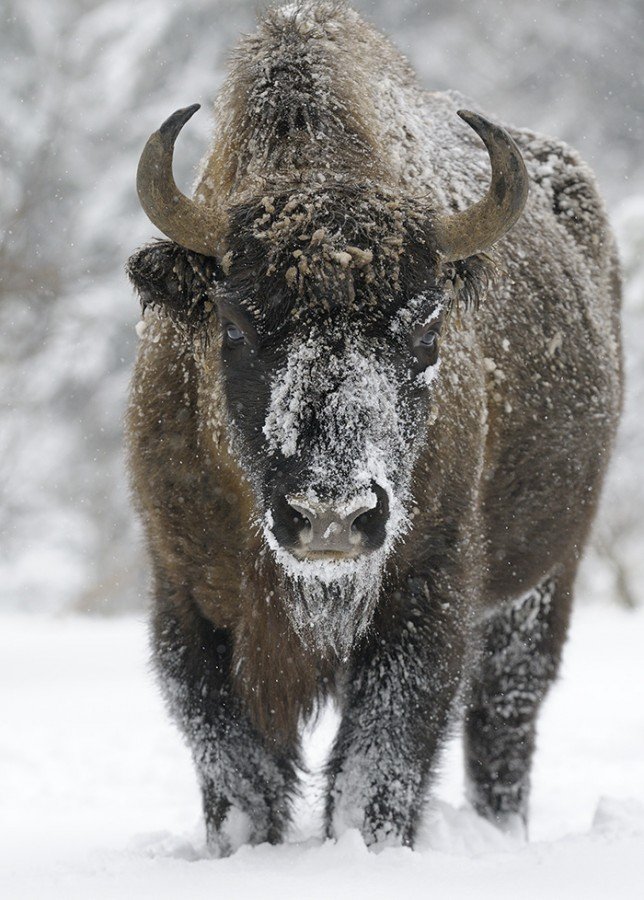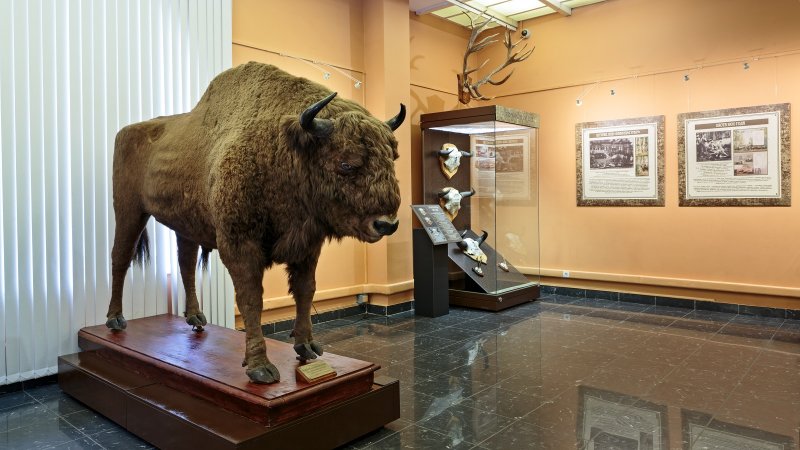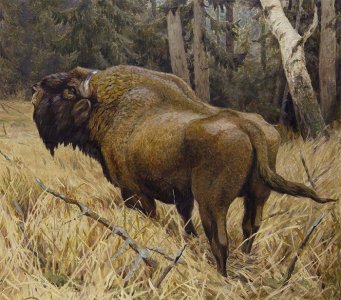17 September 2022 — 11 December 2022
Location :
Exhibition halls / Ground floor / Hall 1
Location:
Exhibition complex / 0 Level / Exhibition hall # 1
On
September 17th the Darwin Museum will open a large exhibition "Bison
Returns" about the fate of the heaviest land animal in Europe, its almost
complete disappearance and restoration. It is dedicated to the 70th anniversary
of the European bison's return to nature. The exhibition presents unique
exhibits valuable from scientifical and historical points of view,
paleontological finds, archival photographs and works of animalistic art from
the collections of the State Darwin Museum.
The bison
is the largest of the animals living in Europe, and the last European
representative of wild bulls. The animal is huge. Sometimes the weight of a
bison reaches a ton, the height at the withers is 220 cm and the body length is
more than 2.5 m. A dense physique is displayed with powerful neck and strong
legs, a thick curly hair that forms a real mane on the chest, a massive head
with formidable horns, a wise look - everything gives out the real lord of the
forest in the appearance of a bison.
The European
bison is one of the surviving representatives of the megafauna of the Ice Age,
whose ancestor, which is the steppe bison, was the same age as mammoths and
woolly rhinoceros. Even 10,000 years ago the European bison inhabited vast
territories from the Pyrenees to Western Siberia, including the Caucasus and
the Scandinavian Peninsula. Bison successfully survived climate change, the
expansion of our Cro-Magnon ancestors, but they have fallen victim to the greed
and cruelty of modern people. Uncontrolled hunting and destruction of habitats
led to the fact that in 1927 the last "lord of the forest" from the
wild was killed in the Caucasus. Scientists managed to restore the species from
12 animals that lived in captivity and save bison from complete extinction. Now
there are about 7 thousand of these animals in the world (mainly in Belarus,
Poland and Russia), but the European bison are still in danger because of
closely related crossing and the lack of pastures, poachers.
At the
exhibition "Bison Returns" you will learn the history of the origin,
extermination and restoration of the European bison and get acquainted with the
bison nurseries in Russia, see the works of outstanding Russian artists who
were inspired by the bison to create genuine masterpieces of the animalist.
These are paintings, graphic and sculptural works by V.A. Vatagin, K.K. Flerov,
B.Y. Vorobyov, V.A. Belyshev, V.V. Trofimov, D.V. Gorlov, V.A. Duvidov, G.E.
Nikolsky, V.V. Simonov, G.N. Glikman, N.I. Atyunin, A.V. Marz.
Among the
interesting exhibits of the exhibition in display there are: the European
bison, which was caught in 1903 by the last Emperor Nicholas II during a hunt
in Belovezhskaya Pushcha; horn sheaths of extinct the Carpathian and the
Caucasian wisent; the skull and the hair of the steppe bison, which is the
ancient ancestor of the bison; the book of the outstanding encyclopedist of the
Renaissance Konrad Gessner "History of Animals" (Historia animalium,
1551) with one of the first scientific images of the bison. Each visitor of the
exhibition will be able to watch documentaries from different years about the
work to restore the European bison population and participate in the
educational program. The bison will also become the main character of the World
Animal Day celebration, which will be held at the Darwin Museum on October 8th.

Bison in
the Bryansk forest. Photo: I.P. Shpilyonok

One of the
first images of a bison. K. Gessner, History of Animals, 1551. From the funds
of the State Darwin Museum

K.K.
Flerov. Late Pleistocene bison. Cardboard, oil. 1971-1979 From the funds of the
State Darwin Museum

Stuffed
bison caught by Emperor Nicholas II in 1903 in Belovezhskaya Pushcha. From the
funds of the State Darwin Museum

The first
free herd of the European bison in Belovezhskaya Pushcha 25 years after the
bison disappeared from nature. Photo: H. Heimpel, 1959
Актуальные мероприятия













